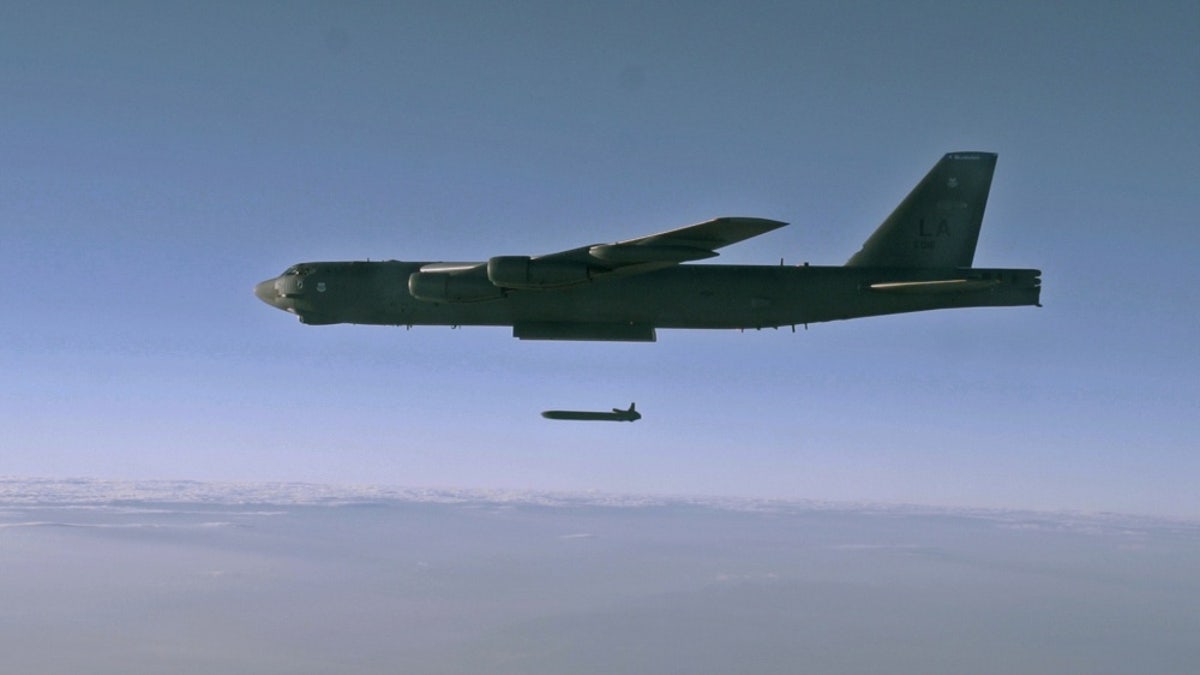
File photo - an unarmed AGM-86B Air-Launched Cruise Missile is released from a B-52H Stratofortress over the Utah Test and Training Range during a Nuclear Weapons System Evaluation Program sortie Sept. 22, 2014. (File photo by Staff Sgt. Roidan Carlson)
U.S. Air Force weapons developers are working with industry to pursue early prototypes of a new air-launched, nuclear-armed cruise missile able to pinpoint targets with possible attacks from much farther ranges than bombers can typically attack.
Service engineers and weapons architects are now working with industry partners on early concepts, configurations and prototypes for the weapon - which is slated to be operational by the end of the next decade - late 2020s.
Many senior Pentagon and Air Force officials believe the emerging nuclear-armed Long Range Stand-Off weapon will enable strike forces to attack deep within enemy territory and help overcome high-tech challenges posed by emerging adversary air defenses.
The Air Force awarded two $900 million LRSO deals last year to both Raytheon and Lockheed Martin as a key step toward selecting one vendor for the next phase of the weapon's development. Due to fast growing emerging threats, the Air Force now envisions an operational LRSO by the end of the 2020s - as opposed to prior thoughts they it may not be ready until the 2030s.
While many details of the weapons progress are not available naturally for security reasons, Air Force officials tell Warrior Maven that plans to move into the Engineering and Manufacturing Development phase are on track for 2022.
A cruise missile armed with nuclear weapons could, among many things, potentially hold targets at risk which might be inaccessible to even stealth bombers in some instances.
As a result, senior Air Force leaders continue to argue that engineering a new, modern Long-Range Standoff weapons with nuclear capability may be one of a very few assets, weapons or platforms able to penetrate emerging high-tech air defenses. Such an ability is, as a result, deemed crucial to nuclear deterrence and the commensurate need to prevent major-power warfare.
“The United States has never had long-range nuclear cruise missiles on stealthy bombers,” Hans Kristensen, Director of the Nuclear Information Project, Federation of American Scientists, told Warrior Maven.
Therefore, in the event of major nuclear attack on the US, a stand-off air-launched nuclear cruise missile may be among the few weapons able to retaliate and, as a result, function as an essential deterrent against a first-strike nuclear attack.
“There may be defenses that are just too hard. They can be so redundant that penetrating bombers becomes a challenge. But with standoff (enabled by long-range LRSO), I can make holes and gaps to allow a penetrating bomber to get in,” Lt. Gen. Stephen Wilson, former Commander of Air Force Global Strike Command, (and Current Vice Chief of Staff of the Air Force) told the Mitchell Institute in 2014.
At the same time, some experts are raising concerns as to whether a nuclear-armed cruise missile could blur crucial distinctions between conventional and nuclear attacks - therefore potentially increasing risk and lowering the threshold to nuclear warfare.
“We have never been in a nuclear war where escalation is about to happen and early-warning systems are poised to look for signs of surprise nuclear strikes. In such a scenario, a decision by a military power to launch a conventional attack - but the adversary expects and mistakenly interprets it as a nuclear attack - could contribute to an overreaction that escalates the crisis,” Kristensen said.
Potential for misinterpretation and unintended escalation is, Kristensen said, potentially compounded by the existence of several long-range conventional cruise missiles, such as the Tomahawk and JASSM-ER. Also, in future years, more conventional cruise missiles and hypersonic weapons are likely to emerge as well, creating the prospect for further confusion among potential adversaries, he explained.
“Stealthy bombers equipped with numerous stealthy LRSOs would - in the eye of an adversary - be the perfect surprise attack weapon,” Kristensen said.
However, senior Air Force and Pentagon weapons developers, many of whom are strong advocates for the LRSO, believe the weapon will have the opposite impact of increasing prospects for peace -- by adding new layers of deterrence.
“LRSO will limit escalations through all stages of potential conflict,” Robert Scher, former Sec. of Defense for Strategy, Plans and Capabilities, told Congress in 2015, according to a report from the Federation of American Scientists.
In fact, this kind of thinking is analogous to what is written in the current administration’s Nuclear Posture Review which, among other things, calls for several new low-yield nuclear weapons options to increase deterrence amid fast-emerging threats. While discussing these new weapons options, which include a lower-yield submarine-launched nuclear weapon, Defense Secretary James Mattis told Congress the additional attack possibilities might help bring Russia back to the negotiating table regarding its violations of the INF Treaty.
-- To Read Warrior Maven's Extensive Pentagon Nuclear Review Report - CLICK HERE --
